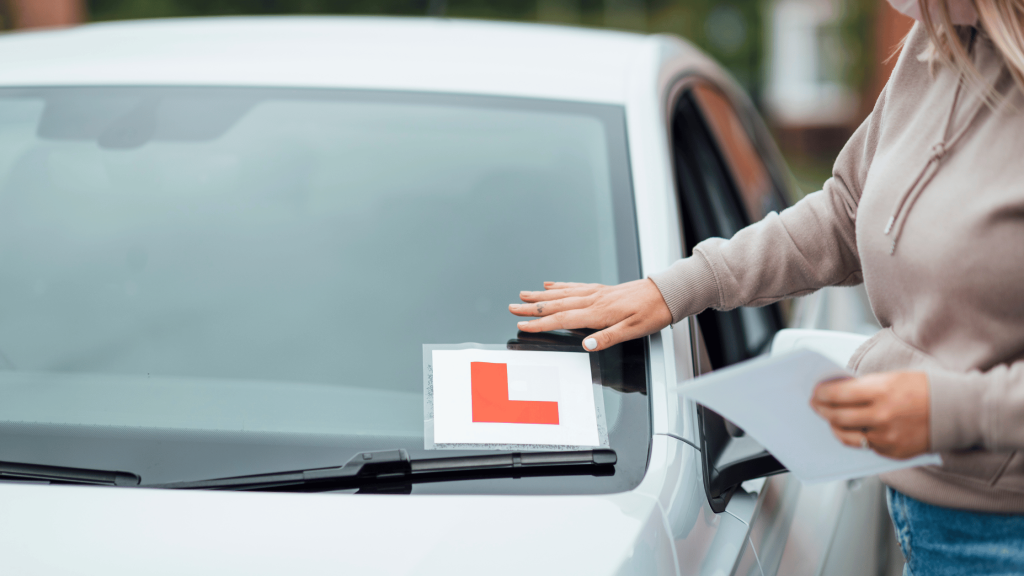Rules are designed to ensure safety and gradual progression towards independent driving from L and R Plate drivers in Northern Ireland. This blog post will focus on two crucial aspects: speed limits and passenger regulations.
Speed Limits
- General Rule: L and R plate drivers are subject to the same speed limits as all other road users.
- Reduced Speed Limits: To enhance safety, there are specific reduced speed limits for L and R plate drivers:
- L Plate Drivers: 45mph maximum on all roads.
- R Plate Drivers: 45mph maximum on all roads, including motorways.
- Motorways:
- L Plate Drivers: Prohibited. L plate drivers are not permitted to drive on motorways.
- R Plate Drivers: Permitted with a 45mph speed limit.
Passenger Restrictions
- Accompanying Driver: The most crucial passenger rule is the requirement for an accompanying driver who meets specific criteria:
- Age: Must be at least 21 years old.
- Driving Licence: Must hold a full UK or EU driving licence for at least three years.
- Insurance: The accompanying driver must be covered by the Vehicle’s insurance policy.
- Passenger Numbers: The number of passengers allowed in the vehicle varies depending on the vehicle type and the age of the L or R plate driver. The general rule is no more passengers than the number of seat belts fitted in the vehicle.
- Learner Drivers: Cars: One passenger is generally permitted.
Motorcycles: No Passengers are allowed.
- Restricted Drivers: Cars: Passenger numbers may vary depending on the restrictions on their driving licence.
- Passenger Responsibilities: The accompanying driver plays a vital role in the safety of the learner or restricted driver:
- Constant Supervision: Must maintain continuous observation of the learner driver’s driving.
- Guidance and Intervention: Provide clear and calm instructions and, if necessary, intervene to prevent dangerous situations.
- Setting a Good Example: Must always demonstrate safe and responsible driving behaviour.
Consequences of Breaking the Rules
- Fixed Penalty Notice: For minor speeding offences.
- Court Action: For more serious speeding offences, which may result in fines, points on the licence, or even disqualification.
- Passenger Rule Violations: Fines: For driving with an unsuitable accompanying driver or exceeding passenger limits.
- Disqualification: In some cases, driving without a qualified accompanying driver can lead to disqualification.
- Driving on a Motorway (L Plates): Fines and Disqualification: Driving on a motorway with L plates is a serious offence that can result in significant fines and disqualification.
Tips for L and R Plate Drivers
- Plan Your Routes: Choose routes that are familiar and avoid busy roads or complex junctions, especially in the early stages of learning.
- Practice Regularly: Consistent practice is key to developing driving skills.
- Be Patient: Learning to drive takes time and effort. Don’t get discouraged by setbacks.
- Communicate with Your Accompanying Driver: Maintain open communication with your accompanying driver, discussing any concerns or questions.
- Stay Calm and Focused: Avoid distractions and maintain a calm and focused approach to driving.
- Understand the Highway Code: Thoroughly familiarise yourself with the Highway Code to ensure you are aware of all road rules and regulations.
Adhering to speed limits and passenger rules is essential for safe driving while on L or R plates. By understanding and following these regulations, learner and restricted drivers can significantly reduce the risk of accidents and progress towards becoming safe and independent drivers.
If you have any concerns or questions about L or R plates in Northern Ireland, seek advice from one of our solicitors specialising in motoring law. They can provide tailored guidance based on your specific circumstances.
Related Blogs:

